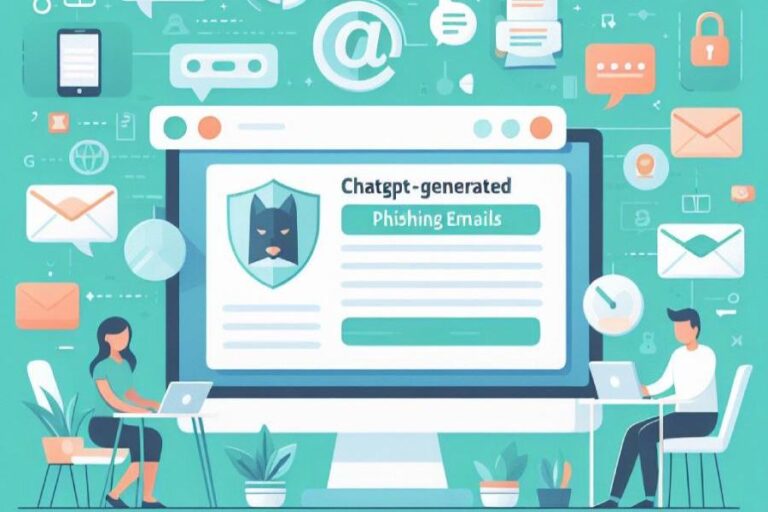How Organizations Can Prevent Email Spoofing with DMARC Compliance?
Email spoofing tricks users into believing that the senders of malicious emails are genuine. A robust DMARC policy framework uses SPF and DKIM to identify spoof email attempts and prevents users from accessing them.
Phishing attacks in the past used to be a hit-and-miss affair. The data gets compromised if the target opens the email and falls for it. However, cybersecurity awareness levels have increased among users. Secondly, technology has improved considerably over the years. Therefore, cyber threat actors have improvised their techniques to launch attacks and compromise information assets. One such malicious attack vector is email spoofing.
What is email spoofing?
Email spoofing is a cyber-attack where malicious actors target business network systems by sending phishing emails with forged sender addresses. The objective is to trick users into believing that someone known to the business is sending these emails. Therefore, the chances of passing spam filters are higher, leading to better email deliverability and open rate. As a result, cybercriminals achieve their goal of targeting business network systems and playing havoc with data privacy.
So how do you arrest email spoofing?
One way is to improve the potency of the email filtering systems to identify spam emails and relegate them to spam folders. Another way is to improve user awareness, enabling them to identify spoofed emails and act accordingly. The third method uses email authentication methods like SPF and DKIM with DMARC.
What are SPF and DKIM, and how do they work with DMARC to prevent email spoofing?
SPF or Sender Policy Framework enables the domain owner to authorize IP addresses allowed to send emails for the domain. Thus, the receiving servers can easily verify that the domain owner authenticates and allows the email messages originating from the specific domain. In addition, it improves the trust factor by not allowing emails with fake sender addresses to pass through the domain.
DKIM or Domain Keys Identified Mail expands on the trust factor by adding a digital signature to every email message, enabling the receiving servers to verify that they were authentic and were not forged or altered in transit.
DMARC, or Domain-based Message Authentication, Reporting, and Conformance, is a unique protocol or policy framework which reassures that a specific sender sent an email. Thus, it ensures that the email message reaches the primary inbox, not the spam email inboxes. So it improves email deliverability and prevents email spoofing.
How does DMARC work?
DMARC requires all email domain owners to add policy tags to their DMARC records. This policy instructs email receivers on treating emails that appear to come from a genuine domain in the header but do not pass DMARC alignment.
DMARC works on three policies, none, quarantine, and reject. It checks every email depending on the defined policies and acts accordingly.

- None – This policy means that it will not take any action on the emails regarding their deliverability. Usually, this policy helps collect data about email authentication of the emails sent from a domain.
- Quarantine – Any email failing the DMARC check arouses suspicion in the eyes of email receivers. Depending on the defined policy, the email receiver can send such emails to the spam folders subject to filtering. Alternatively, it flags them as suspicious.
- Reject – This policy outrightly rejects any email that fails the DMARC record check.
Email receivers should start with the ‘none’ policy and collect data about the email sources sending emails from the domain. The percentage option (pct) can specify the percentage of suspicious emails to enable the application of the DMARC policy. By default, the percentage value is 100%. It means that all emails are treated as suspicious.
However, based on the email data collected and analyzed, the receivers can set the pct option accordingly. For instance, setting it to 10 means that 10% of the suspicious emails must be quarantined. The others are rejected. You can increase the pct option by refining the DMARC policy to allow more emails to be quarantined. So starting from p = none and pct = 100, you can gradually move towards p = quarantine and pct = 100, then to p = reject and pct = 100.
Therefore setting up the DMARC policy and analyzing DMARC reporting is crucial to prevent email spoofing.
Setting up the DMARC policy ensures that emails with suspicious headers do not reach the email inboxes. Instead, they either get relegated to spam email inboxes or rejected outright. The advantage of sending emails to spam inboxes is that users can check each email and act accordingly, depending on the email contents. So, DMARC with SPF and DKIM improves email deliverability and, more importantly, the quality of email deliverability.
Final Thoughts

Email spoofing has become more prevalent because cyber threat actors exploit users’ vulnerabilities and sneak in emails with malicious attachments or content. Since the emails appear to originate from genuine sources, they can pass the human evaluation. However, a robust DMARC with SPF and DKIM can identify suspicious emails and ensure they do not reach the primary email inboxes. Thus, it prevents email spoofing.







